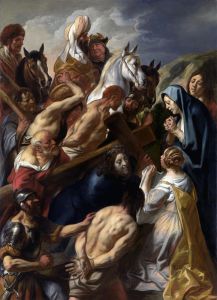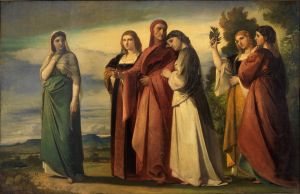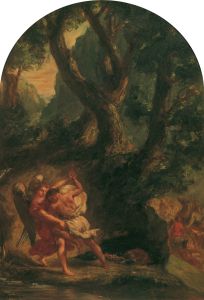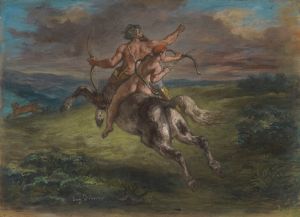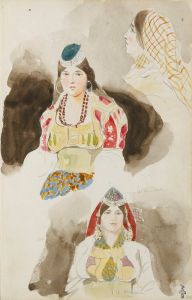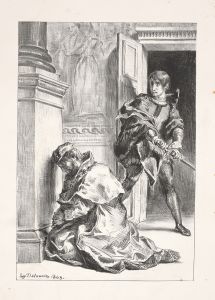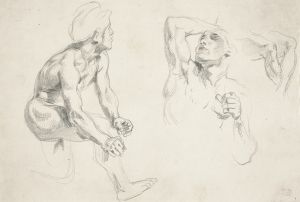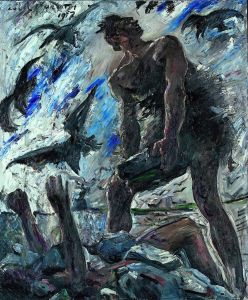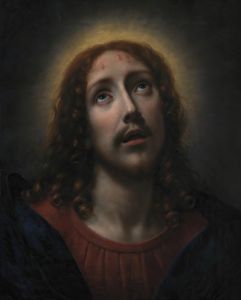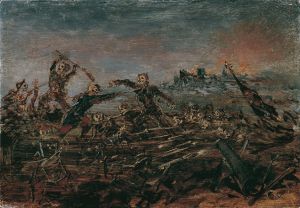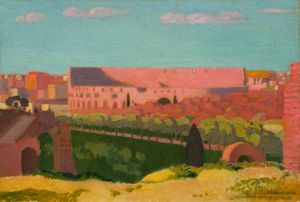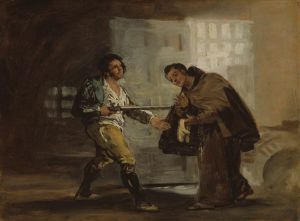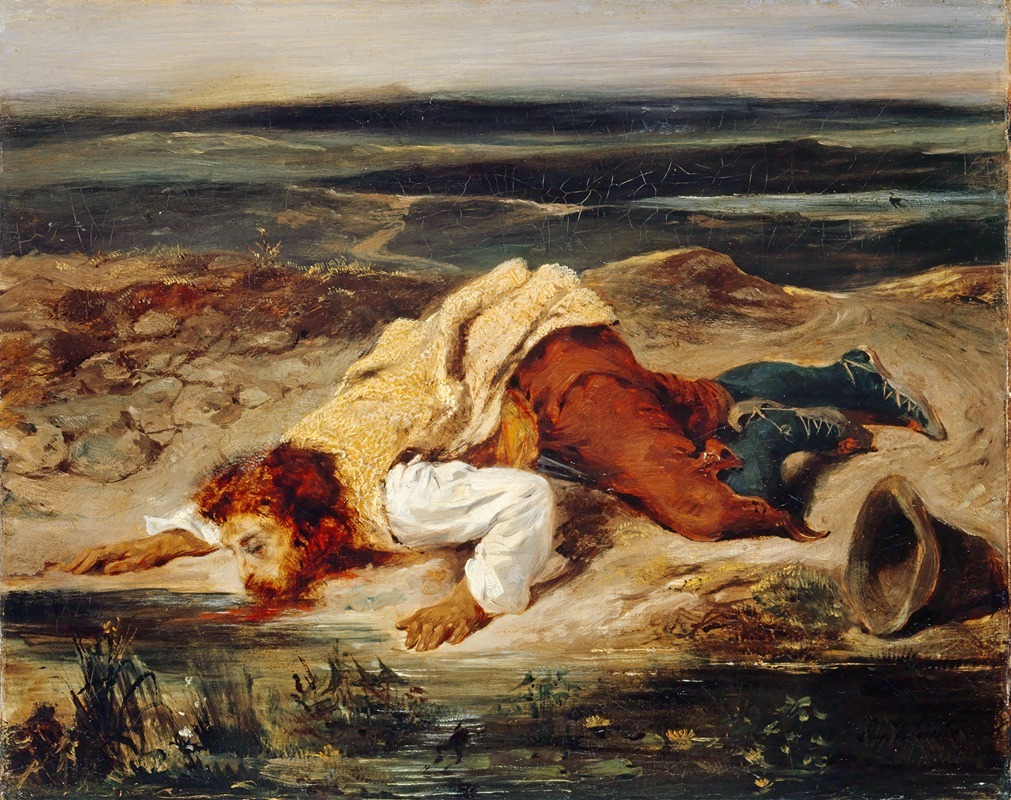
Wounded Brigand
A hand-painted replica of Eugène Delacroix’s masterpiece Wounded Brigand, meticulously crafted by professional artists to capture the true essence of the original. Each piece is created with museum-quality canvas and rare mineral pigments, carefully painted by experienced artists with delicate brushstrokes and rich, layered colors to perfectly recreate the texture of the original artwork. Unlike machine-printed reproductions, this hand-painted version brings the painting to life, infused with the artist’s emotions and skill in every stroke. Whether for personal collection or home decoration, it instantly elevates the artistic atmosphere of any space.
Eugène Delacroix's Wounded Brigand is a painting created by the French Romantic artist, known for his dramatic and emotive works. Delacroix, a central figure of the Romantic movement, often explored themes of human struggle, violence, and the exotic in his art. Wounded Brigand reflects these interests, depicting a solitary figure in a moment of vulnerability and tension.
The painting portrays a brigand, or bandit, who appears to be injured, seated on the ground in a desolate landscape. The figure is dressed in clothing that suggests a romanticized depiction of outlaws, a common subject in 19th-century art and literature. The brigand's pose and expression convey a sense of pain and exhaustion, while the surrounding environment enhances the mood of isolation and hardship. Delacroix's use of rich, dynamic colors and dramatic contrasts of light and shadow is characteristic of his style, emphasizing the emotional intensity of the scene.
The exact date of the painting's creation is not definitively documented, but it is believed to have been completed during the early to mid-19th century, a period when Delacroix was actively producing works that explored themes of heroism, suffering, and the human condition. The subject of the wounded brigand aligns with the Romantic fascination with antiheroes and individuals living on the fringes of society, often portrayed with a mix of admiration and pity.
Delacroix's works, including Wounded Brigand, were influenced by his travels and his exposure to diverse cultures and landscapes. His journey to North Africa in 1832 had a significant impact on his artistic vision, inspiring many of his later works. However, it is unclear whether Wounded Brigand was directly influenced by this trip or if it draws more broadly from European Romantic ideals.
The painting is an example of Delacroix's ability to combine technical mastery with a deep exploration of human emotion. While Wounded Brigand may not be as widely recognized as some of his larger, more famous works, such as Liberty Leading the People, it remains a testament to his skill in capturing the complexities of the human experience.
Further details about the painting's current location, provenance, or reception are not readily available.





